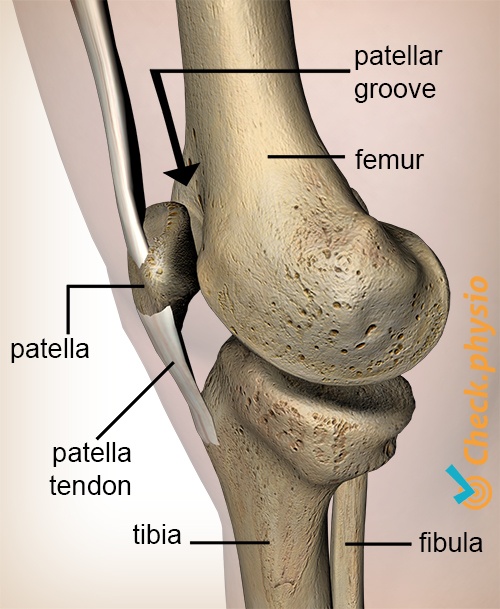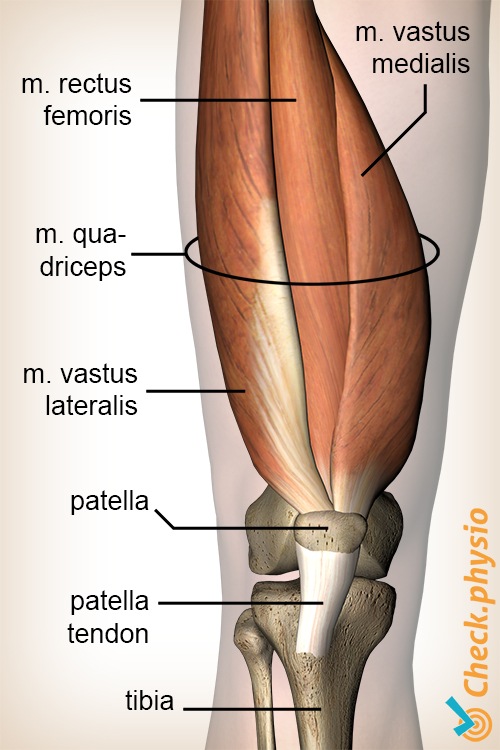- Conditions
- Patellofemoral pain syndrome
Patellofemoral pain syndrome Anterior knee pain / chondromalacia patellea
Introduction
Patellofemoral pain syndrome (PFPS) is characterized by pain around the kneecap (patella). The symptoms occur when a specific load is placed on the patellofemoral joint. This is the joint between the patella and the thigh bone (femur). PFPS is primarily seen in adolescents and young adults.
Various terms are used to denote the Patellofemoral pain syndrome:
- Anterior knee pain
- Chondromalacia patella
- Patellofemoral dysfunction
Unfortunately, the exact causes of the signs and symptoms of PFPS have not yet been clarified.

Description of condition
The patella is pointed at the rear. This allows it to fit into the groove formed by the thigh bone. The patella can move up and down in this groove during movements of the knee. When the patella no longer moves freely in the groove and this causes symptoms, we refer to it as patellofemoral pain syndrome.
In most cases, the patella moves too far to the outside of the groove. This causes the ligament structures on the inside of the knee to stretch, in turn causing increasing pressure on the outside of the joint between the patella and the thigh.
The pain is probably caused by irritation of the capsules and ligaments surrounding the patella. The increase in pressure can also cause pain, because the nerve structures in the bone beneath the joint emit pain signals.
Cause and history
The "incorrect movement" of the patella can have many different causes:
- Malpositioning of the knees and/or ankles
- Shortened muscles or rigid soft tissues
- Shape and position of the kneecap and/or the groove
- Decreased load-bearing capacity of the knee
- Disrupted functioning or loss of strength in the muscles surrounding the kneecap
Signs & symptoms
The pain develops gradually and is located around or at the rear of the kneecap. Walking up steps, running, crouching or cycling can provoke the symptoms. If the patient sits for extended periods this may feel very uncomfortable. This phenomenon is referred to as "movie theater sign". In some cases the knee may "stutter" when flexing or extending.
Diagnosis
The diagnosis is made based on an interview and physical examination. Additional tests are not necessary to make the diagnosis. However, further testing could help rule out other issues with the kneecap.
Treatment and recovery
It is important to know that the pain is unpleasant, but generally harmless. Firstly, it is important to identify the origin of the symptoms so that these can be eliminated to start with.
Next, relative rest and exercise therapy may alleviate the symptoms. It is thought that training the vastus medialis (teardrop) muscle has a favorable effect on correct functioning of the patella. This is due to the fact that this muscle pulls the patella inward, which provides a good correction for a patella that tends to move too far outward.
Exercises
Now follow the exercise program with exercises for patellofemoral pain syndrome.
More info
You can check your symptoms using the online physiotherapy check or make an appointment with a physiotherapy practice in your locality.

